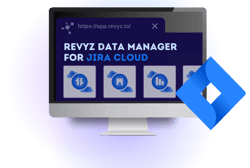Introduction
One of the fastest growing use cases for Atlassian Jira Cloud is IT Service Management (ITSM). Atlassian have invested heavily in the development of their JSM features within the flagship, Jira, product and made it clear that ITSM is very much part of their future.
A lot of Atlassian customers who decide to use Jira are heavily aligned with best practices in in their standard ITSM processes, but the same cannot be said for change management processes within their Atlassian cloud.

Jira Service Management gains AI-powered ITSM capabilities
This article explores the operational risks associated with inadequate change management in Jira ITSM and offers strategies for mitigating these risks to keep your IT services running smoothly.
The Role of Change Management in Jira ITSM
Change management in Jira ITSM is about handling changes to the IT infrastructure, services, and processes in a systematic way. It ensures that changes are implemented smoothly, minimizing disruptions to service quality and business operations. Good change management helps keep systems stable, enhances service reliability, and ensures compliance with regulatory requirements.
Operational Risks in ITSM Arising from Poor Change Management
Workflow Interruptions
One of the biggest risks of poor change management is the disruption of ITSM workflows. Without proper planning and communication, changes can be implemented incorrectly, causing workflows to break. This can lead to service delays, increased incident rates, and a decline in customer satisfaction.
Permission Misalignments
Mismanagement of permissions is another major risk. Changes that aren't properly vetted can result in incorrect permission settings, either granting too much access to unauthorized users or restricting access for legitimate users. This can compromise data security and disrupt daily ITSM operations, leading to inefficiencies and potential security breaches.
Integration Failures
ITSM environments often rely on various integrated tools and systems. Poorly managed changes can disrupt these integrations, leading to failures in data synchronization, automation processes, and system communications. This can hinder IT service delivery and create a ripple effect of operational challenges across the organization.
Strategies for Effective Change Management in ITSM
Establishing Clear Processes
Developing clear change management processes is crucial for ITSM success. This includes documenting procedures for requesting, reviewing, approving, and implementing changes. Clear processes ensure that all stakeholders understand their roles and responsibilities, reducing the risk of miscommunication and errors.
Regular Monitoring and Auditing
Continuous monitoring and regular auditing of changes are essential to ensure they are implemented correctly and do not introduce new risks. Monitoring helps in early detection of potential issues, while audits provide a retrospective analysis to identify areas for improvement in the change management process.
Use of Automation
Leveraging automation can significantly enhance the efficiency and accuracy of change management in ITSM. Automated tools can handle routine changes, enforce policy compliance, and provide real-time tracking of changes. Automation reduces the risk of human error and frees up IT staff to focus on more strategic tasks.
Implementing Robust Change Management Practices in ITSM
Step-by-Step Implementation
- Assessment: Evaluate current change management practices and identify areas for improvement.
- Planning: Develop a comprehensive change management plan, including risk assessment and mitigation strategies.
- Communication: Ensure clear communication with all stakeholders about the change management processes and any upcoming changes.
- Training: Provide training for ITSM staff on best practices for change management and the use of automation tools.
- Execution: Implement changes according to the defined processes, with continuous monitoring to ensure success.
- Review: Conduct post-implementation reviews to assess the impact of changes and identify lessons learned.
Employee Training
Training is vital for ensuring that ITSM employees are well-versed in change management processes. Regular training sessions and workshops can help staff understand the importance of change management, learn how to use relevant tools, and stay updated on best practices.
Conclusion
Effective change management is critical for maintaining operational stability and efficiency in Jira ITSM environments. By understanding the operational risks associated with poor change management and implementing robust practices, ITSM organizations can minimize disruptions and ensure seamless service delivery. It is essential to prioritize clear processes, regular monitoring, automation, and employee training to achieve optimal change management outcomes.
In conclusion, organizations must take proactive steps to strengthen their change management practices in Jira ITSM to avoid turning disruptions into disasters. By doing so, they can safeguard their operations, maintain service quality, and enhance overall business performance.


